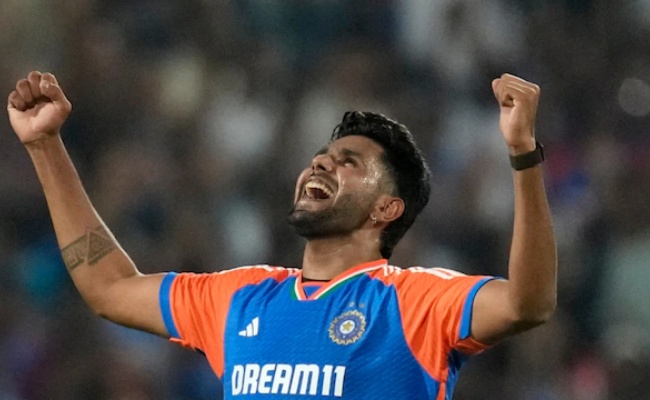views : 650
3 Min Read
India vs England: What is a concussion substitute in cricket- Explainer
‘Concussion substitute’ has been the buzz word in cricket since the 4th T20I between India and England which was played in Pune last night. In that T20I, Shivam Dube was hit on the helmet by a Jamie Overton ball during the fag end of the Indian innings. He was suspected of having a concussion and was replaced by Harshit Rana for the second innings.
Harshit Rana, who was on T20I debut, ended up being the difference maker in the game. He got the wicket of Liam Livingstone in his very first over, and accounted for the scalps of Jacob Bethell and Jamie Overton. He stifled the chase with his tight bowling in the middle overs, ending with figures of 3/33.
In response to the concussion sub decision and choice, England skipper Jos Buttler remarked “Either Shivam Dube has put on about 25mph with the ball or Harshit has really improved his batting. It's part of the game and we really should have gone on to win the match, but we disagree with the decision.”
What is a concussion substitute?
If a player sustains a concussion or a suspected concussion due to an on field incident, he/she is allowed to get a like for like replacement for the remainder of the match. The replacement will be allowed to perform all the roles that a normal player would have performed that is bowling, batting and fielding.
Concussion substitutes are different from normal substitutes in the fact that they can partake in the game beyond just fielding. In case of an injury that is not concussion related, the player who is injured only gets a fielding replacement and the team effectively continues the game a player short. They have to do without the services of an injured bowler or batter, as no replacement from the outside will be allowed. Concussion substitutes though are allowed to bat and ball, making it an even 11 vs 11 contest once again.
What is the procedure for concussion substitution?
If there is a concussion or a suspected concussion, the team can request for a concussion substitute after a formal diagnosis from the team's medical representative. The aggrieved team submits a medical report and suggests the replacement player to the ICC match referee for that match. It is the duty of the match referee to validate the authenticity of the request and approve the like-for-like replacement.
Like-for-like replacement
It is important that the match referee approves for a like-for-like replacement if there is a request for a concussion sub. Like-for-like replacement basically means that that replacement player would largely be performing the role of the expected role of the replacement player for the remainder of the game.
In simpler terms, it basically means that a batter should be replaced by a batter, a bowler by a bowler and an all-rounder by an all-rounder. The aggrieved team nominates their replacement player, but it is the role of the match referee to approve that replacement so as to ensure teams don’t get an unfair advantage for the remainder of the game.
In all cases, an exact like for like replacement might not be possible so teams are allowed to nominate the most likely replacement. Like in yesterday’s case, where a pace bowler replaced a seam bowling all rounder. Due to the lucid structuring of the law, making it open to interpretation as per the match referee, the concussion rule can stir up a controversy. But overall, the rule is a welcome addition to cricket’s efforts towards player safety, ensuring that everyone in the game takes head injuries seriously.
